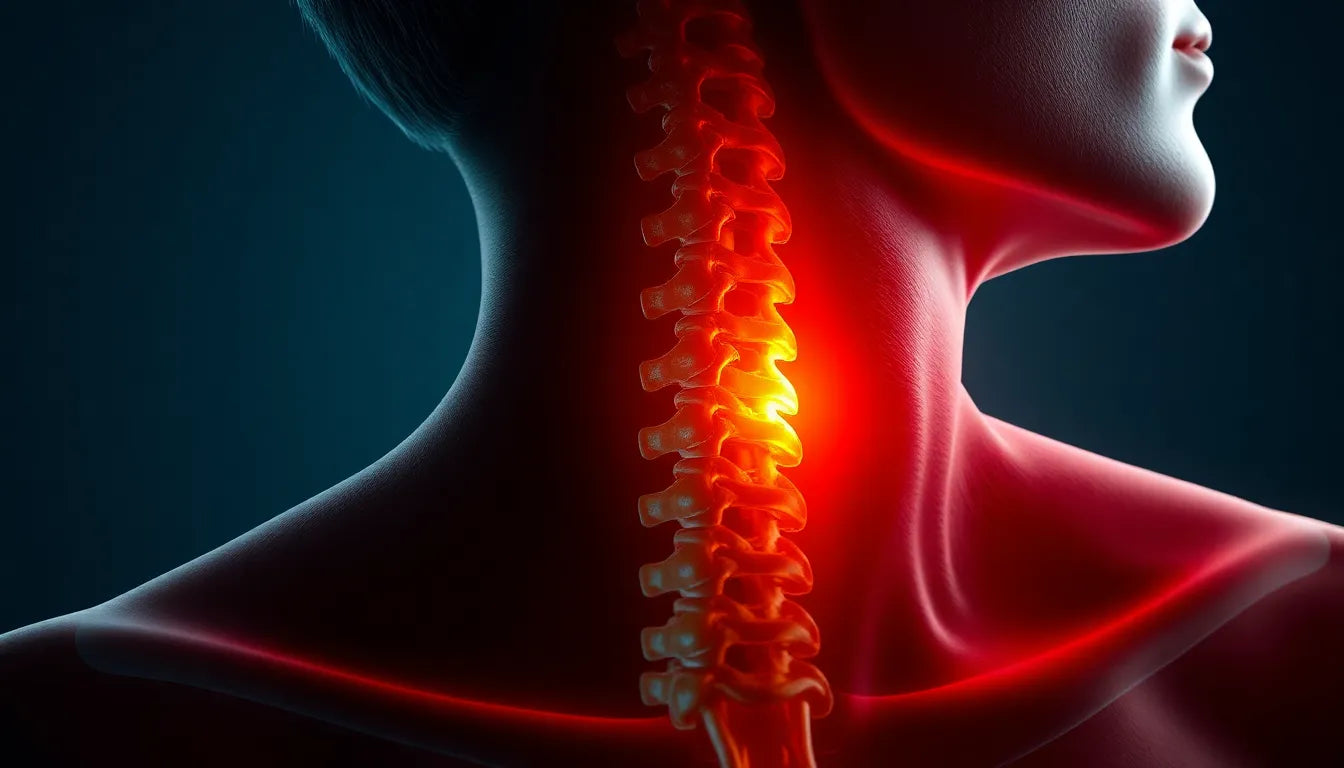Spinal health is as crucial for our four-legged friends as it is for us. When it comes to dogs, a herniated disc can significantly impact their mobility and overall quality of life. Just like humans, dogs rely heavily on a healthy spine for everyday activities, from chasing a ball to simply wagging their tail. A herniated disc can disrupt these activities, leading to pain and discomfort that no pet owner wants for their beloved companion.
understanding herniated discs in dogs
A herniated disc occurs when the cushioning discs between the vertebrae of the spine become damaged and bulge or rupture, pressing against the spinal cord or nerves. This condition is not only painful but can also lead to severe mobility issues in dogs. The spine plays a vital role in a dog's ability to move, so any disruption can have a profound effect on their daily life. It's essential for dog owners to recognize the signs and understand the implications of this condition to ensure their pet receives the appropriate care.
Herniated discs in dogs are often associated with a condition known as Intervertebral Disc Disease (IVDD), which is prevalent in certain breeds. This condition can lead to sudden pain, weakness in the limbs, and even paralysis in severe cases. Understanding the mechanics of a herniated disc and its impact on your dog's health is the first step in managing this condition effectively.
purpose of this post
This blog post aims to equip you with comprehensive knowledge about herniated discs in dogs. We will delve into the symptoms to watch for, explore various treatment options, and provide strategies for recovery. Whether your dog is showing early signs of a herniated disc or you're looking to prevent this condition, our goal is to offer practical advice that can help your furry friend bounce back to their active selves. By understanding the intricacies of herniated discs in dogs, you can take proactive steps to ensure your pet's spinal health and overall well-being.
understanding ivdd in dogs
Intervertebral Disc Disease (IVDD) is one of the most common causes of herniated discs in dogs. This condition occurs when the cushioning discs between the vertebrae begin to deteriorate, leading to disc herniation. Certain breeds are genetically predisposed to IVDD, making them more susceptible to this painful condition. Breeds like Dachshunds, Beagles, and Shih Tzus are particularly at risk due to their long spinal structure, which places additional stress on their vertebrae.
Recognizing the symptoms of IVDD is crucial for early intervention. Dogs with herniated discs may exhibit signs such as reluctance to move, changes in gait, or even vocalization of pain when touched. In severe cases, paralysis can occur, necessitating immediate veterinary attention. Diagnosis typically involves advanced imaging techniques such as myelography, CT scans, or MRIs to pinpoint the location and severity of the herniation.
common sites of disc herniation in dogs
Disc herniations in dogs can occur anywhere along the spine, but they are most commonly found in the cervical (neck) and thoracolumbar (mid-back) regions. The cervical region is particularly vulnerable due to the flexibility required for head movements, while the thoracolumbar area is often affected due to the high degree of motion and weight-bearing stress. Understanding these common sites can help pet owners monitor their dogs for signs of discomfort in these areas.
treatment options for herniated discs
Treatment for herniated discs in dogs can range from conservative management to surgical intervention, depending on the severity of the condition. For mild cases, conservative management is often the first line of treatment. This approach includes strict rest to prevent further injury, pain relief medications to manage discomfort, and physiotherapy to support recovery and maintain muscle strength.
In cases where conservative management is insufficient, surgical intervention may be necessary. Surgery aims to relieve pressure on the spinal cord or nerves by removing the herniated disc material. The type of surgery depends on the location and severity of the herniation. While surgical intervention can be costly, it often offers the best chance for recovery, especially in cases with severe neurological deficits.
comparing treatment options
| Treatment Type | Cost | Recovery Time | Success Rate |
|---|---|---|---|
| Conservative Management | Low to Moderate | Several weeks to months | Varies, often effective for mild cases |
| Surgical Intervention | High | Weeks to months | High, especially for severe cases |
Choosing the right treatment option depends on various factors, including the dog's age, overall health, and the severity of the herniation. A veterinarian can provide guidance on the best course of action based on a thorough assessment of the dog's condition.
Understanding the intricacies of herniated discs and the available treatment options can empower pet owners to make informed decisions about their dog's care. With proper management, many dogs can recover from a herniated disc and return to their active, happy selves.
Recovery and prognosis for herniated discs in dogs
After a dog has undergone treatment for a herniated disc, whether through conservative management or surgical intervention, the recovery process is crucial for ensuring a return to normal activity. Post-treatment care involves several key elements that pet owners should be aware of. Ensuring your dog adheres to strict rest, especially in the initial weeks, is vital to prevent further injury. Additionally, pain management through prescribed medications will help alleviate discomfort and support healing.
Dietary considerations also play a role in recovery. Maintaining a healthy weight is essential to reduce stress on the spine. A balanced diet rich in nutrients can aid in the healing process. Exercise restrictions are equally important; gradual reintroduction to physical activity should be done with the guidance of a veterinarian, focusing on low-impact exercises that do not strain the spine.
The prognosis for dogs with herniated discs varies depending on several factors, including the severity of the herniation and the dog's overall health. Dogs that receive prompt and appropriate treatment often have a favorable outcome. Long-term management may involve regular veterinary check-ups and adjustments to lifestyle to prevent recurrence. With proper care, many dogs can lead a full, active life post-recovery.
Frequently Asked Questions
What are the early signs of a herniated disc in dogs?
Early signs include back pain, weakness in the limbs, reluctance to move, and changes in posture. If you notice these symptoms, it's important to consult a veterinarian promptly.
How urgent is treatment for a herniated disc in dogs?
Treatment is highly urgent, especially if severe symptoms like paralysis occur. Immediate veterinary attention is crucial to prevent permanent damage and improve recovery chances.
Can herniated discs in dogs heal on their own?
In some mild cases, herniated discs may improve with conservative management, including rest and medication. However, severe cases often require surgical intervention for optimal recovery.
What breeds are most at risk for herniated discs?
Breeds such as Dachshunds, Beagles, and Shih Tzus are more prone to herniated discs due to their spinal structure. Owners of these breeds should be particularly vigilant for symptoms.
How can I prevent herniated discs in my dog?
Prevention strategies include maintaining a healthy weight, providing regular, safe exercise, and avoiding activities that excessively strain the spine. Regular veterinary check-ups can also help in early detection and management.
By understanding the recovery process and being proactive in your dog's care, you can help your furry friend bounce back from a herniated disc and enjoy a happy, active life. Remember, early intervention and adherence to veterinary advice are key to successful outcomes.


















